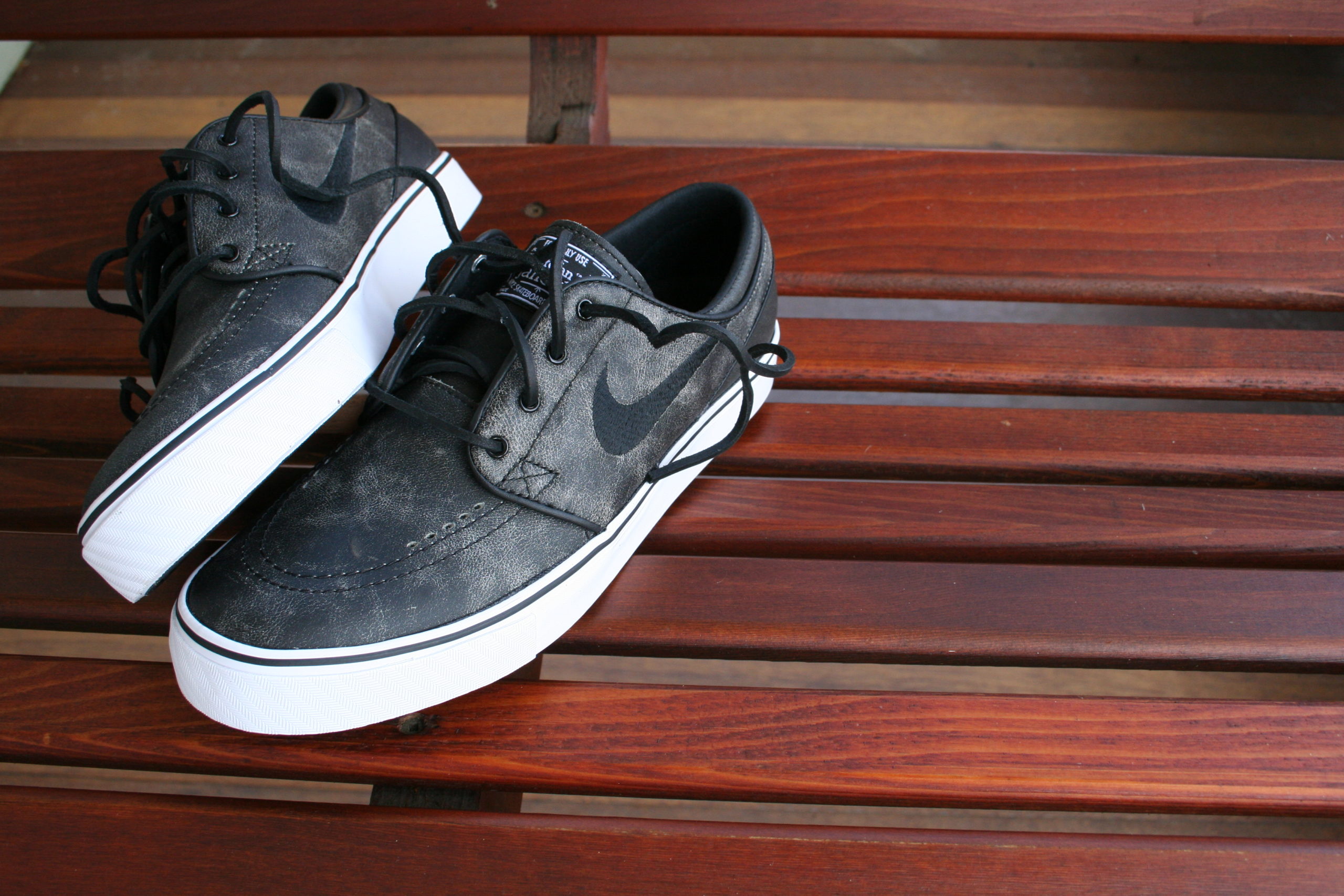By Cheryl Chee Tsutsumi
 From middle-school misfit to Senior Global Director of Concepts, Athletes and Purpose for Nike, the world’s largest manufacturer of athletic shoes and apparel, James Arizumi ’93 has forged a remarkable path to success. Two of his passions influenced that journey: skateboarding, which he picked up at age 11, and art, an elective he excelled at while attending Mid-Pacific from grades 7 through 12.
From middle-school misfit to Senior Global Director of Concepts, Athletes and Purpose for Nike, the world’s largest manufacturer of athletic shoes and apparel, James Arizumi ’93 has forged a remarkable path to success. Two of his passions influenced that journey: skateboarding, which he picked up at age 11, and art, an elective he excelled at while attending Mid-Pacific from grades 7 through 12.
“I gravitated toward the art classes because I was free to explore and create; there were no rules or structure,” Arizumi says. “Art was a way to express myself and accomplish something on my own terms. The traditional STEM curriculum only taught memorization, not application.”
He sees skateboarding as akin to art because unlike many other sports, there are no rules, only pure expression. “It combines athleticism, technical know-how, body mechanics and, most importantly, style,” he says. “Skateboarding is liberating; it recontextualizes and redefines the world around you.”
After graduating from Mid-Pacific, Arizumi attended Woodbury University in Los Angeles, where he earned a degree in architecture in 1998. Recognizing his potential, one of his professors recruited him for a project he was managing for Leo A. Daly, one of the largest and most prestigious architectural firms in the United States.
“It was the Cathedral of Our Lady of the Angels for the Los Angeles diocese, one of the largest Catholic communities in the country,” Arizumi says. “At the time, it was the biggest construction project in Los Angeles. A year or so later, after I finished that job, I decided to quit architecture. The pace of the work was grueling, creativity was limited and I felt I had aged a decade. I thought, If that’s the best it’s going to get, I’m good. I need to do something else that makes me feel alive.”
He went on to work as a window display designer at Neiman Marcus in Beverly Hills where, admiring couture fashion and upscale furniture and household wares, he discovered industrial design. “My mind was blown to think designing products could be a profession,” he says. “I thought it would complement my career path because architecture is about form and function on a macro scale and industrial design is about form and function on a micro scale. Plus, the intrigue of mass production versus bespoke one-and-done architecture seemed promising.”
Arizumi earned his master’s degree in industrial design from Pratt Institute in New York in 2002. He went on to design furniture, retail spaces and trade show booths, but, in the turbulent aftermath of 9-11, he decided to move back to Los Angeles, where he landed jobs with two footwear companies—first, Clae; then Lakai. In 2004, Nike recruited him to design shoes for its new Nike SB (Skateboarding) division, and he relocated to Oregon (he now lives in Portland with his wife, Karyn, and their children Kainalu, Alika and Malia).
In Arizumi’s view, footwear is similar to architecture. “Most people don’t realize there’s a technical aspect to designing footwear,” he says. “Like architecture, you’re solving problems, you’re innovating, you’re creating a beautiful, highly functional piece of art. The act of designing is what I refer to as emotional labor. It’s putting everything you are—all of your experiences as a person—into something. It is in so many ways a gift of yourself to the world.”
Arizumi modestly says he has designed “lots” of shoes for Nike over the years, but the one he is most recognized for is the SB Stefan Janoski, which he created with pro skateboarder Stefan Janoski. It debuted in 2009, when heavy, chunky, overbuilt, thick-soled shoes dominated the skateboarding industry. Stefan wanted a minimal-paneled, low-profile shoe so that he would have maximum board feel when skating.
The Janoski didn’t fit Nike’s idea of what a signature shoe should look like because it was too simple and didn’t have the visible technology that Nike is known for. Instead, it was notable for its craftsmanship and internal technology.
When the Janoski was in development, many of Nike SB’s team members were nervous about how it would do because it was unlike any other skateboarding shoe out in the market. But Stefan was clear about his vision, and he stuck to it. The Janoski wound up being a huge success, cementing a respected place in skateboarding history and being a bestseller and high-performance icon for Nike for 12 years running.
Arizumi shared that and other memorable stories during a September 25 Zoom presentation for about 60 participants, including art teacher Alex Donis’ Art 1:2D Introduction/Foundations class and interested Mid-Pacific faculty, administrators and other art students. The primary message he hopes attendees got from the session is simple: “When it comes to creativity, follow your instincts,” he says. “Do what you think is right no matter what people say, and it will lead you to where you are supposed to be.”

